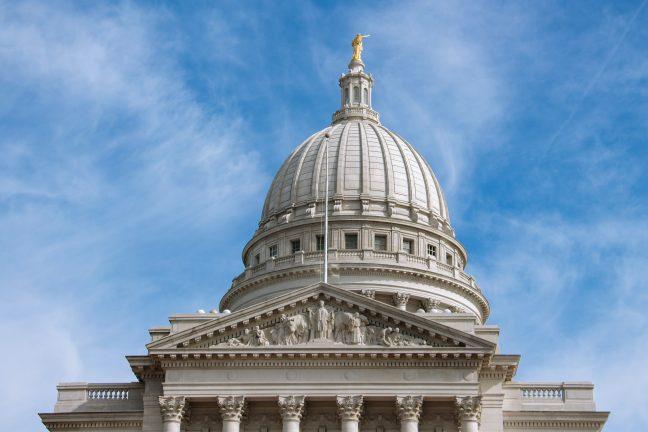In a landmark 6-3 decision, the Supreme Court of the United States ended race-conscious college admissions nationwide. After decades of affirmative action, the ruling has made it unlawful for colleges to take race into consideration as a specific factor in admissions.
Affirmative action dates back to John F. Kennedy’s presidency, University of Wisconsin professor of political science and legal studies Howard Schweber said. Then, in Regents of the University of California v. Bakke (1978), the Supreme Court considered the constitutionality of an affirmative action program in the University of California system.
UC–Davis had a system of preferences for racial minorities in its admissions to medical school, Schweber said. When the case went to the Supreme Court in 1978, they claimed four justifications for having these preferences — to make up for past discrimination, to increase minority representation among the population of physicians, to increase services to minority patients and to enhance the educational experience of everyone at the medical school by increasing diversity.
According to Schweber, the Bakke ruling only accepted the last reason as legitimate. The first three reasons were all excluded as unconstitutional when exercised by a public institution. This ruling remained in place until June 29.
“There is no longer any acceptable justification for racial preferences,” Schweber said. “That’s where we’re at today. A big lesson here is that elections have consequences.”
Former President Donald Trump said he would elect justices that will strike down affirmative action, and that is exactly what happened, Schweber said.
Affirmative action practices in college admissions were struck down on the basis that they violate the Equal Protection Clause of the 14th Amendment, according to the June 29 ruling.
The Equal Protection Clause says that everyone is entitled to equal protection under the law, Schweber said. Its purpose was to ensure that Black people will not be discriminated against by white people after the abolishment of slavery.
“If you are an originalist, as many of the current justices are, then you would ask, ‘What was the original understanding and purpose of the Equal Protection Clause?’ And the answer is what I just said – to prevent the oppression of Black people by white people,” Schweber said. It was not originally intended to prevent government actions to help Black people.”
According to Schweber, in the 1990s, a newly conservative Court changed its stance and said the Equal Protection Clause is as hostile to laws trying to help minorities as it is to laws trying to harm them. This neutral treatment principle of the clause is the one that has carried forward. Any time a law dictates treating people differently based on their race, it needs to satisfy strict scrutiny — the highest level of constitutional review and the one that is most difficult to meet.
The Court’s decision leaves a lot of uncertainty, Schweber said.
“So the case opens with a big sweeping blanket statement by Chief Justice Roberts that says racial preferences are never permitted in education,” Schweber said. “But then 39 pages later, he adds a kind of throwaway comment that says no one should read this case to mean that colleges may not take into account an individual student’s experience as a member of a racial minority in assessing their life story.”
This shifts the burden to the applicant to make whatever kind of narrative they want to make about their racial status in their personal statement, according to Schweber. This case does not make clear what is permissible or impermissible in how colleges treat these personal statements.
Minority students who attend schools with college counselors or have family members who have been through the college application process will likely be able to navigate writing a personal statement highlighting their experiences and will likely not be as affected by this decision, Schweber said.
“So in other words, the very students we would most like to be able to reach if we really cared about increasing opportunity are the ones who will find it most difficult after this to receive any advantage from the schools seeking to diversify their student body on racial grounds,” Schweber said. “Conversely, wealthy and privileged minority students will effectively, it seems, be able to avoid the effects of this opinion pretty much altogether.”
There are still ways for universities to both follow the law and increase diversity, Schweber said. One way to do this might be to stop effectively setting aside an enormous portion of every class for white people. For example, at Harvard, about one-third of the class is composed of legacy students, children of donors and recruited athletes. All three of these categories are overwhelmingly white.
Another way for universities to adjust after the June 29 ruling would be to focus on economic class as a way of diversifying schools, which is constitutionally less problematic, according to Schweber.
“If colleges focused on insisting that some proportion of their entering class be below some economic threshold, not only would that likely be more meaningful in terms of increasing opportunities for people who need them and using colleges as instruments of social mobility, it likely would result in greater racial diversity than race-specific preferences,” Schweber said.
A statement from UW Chancellor Jennifer Mnookin said that while the ruling will require some modifications to the university’s admissions process, racial diversity remains a “bedrock value” of the institution.
The Associated Students of Madison released a statement saying UW does not do enough to recruit and retain marginalized students and that they should see this decision as a call to action.
The ruling comes around the same time Wisconsin’s budget for the next two years is being discussed. Almost a week after the ruling, Gov. Tony Evers signed into law the next biennial budget with a proposed $32 million cut to the University of Wisconsin system — about the amount of money that would have gone toward diversity, equity and inclusion programming.
“That pretty much tells you where our legislature is at on this issue,” Schweber said.


